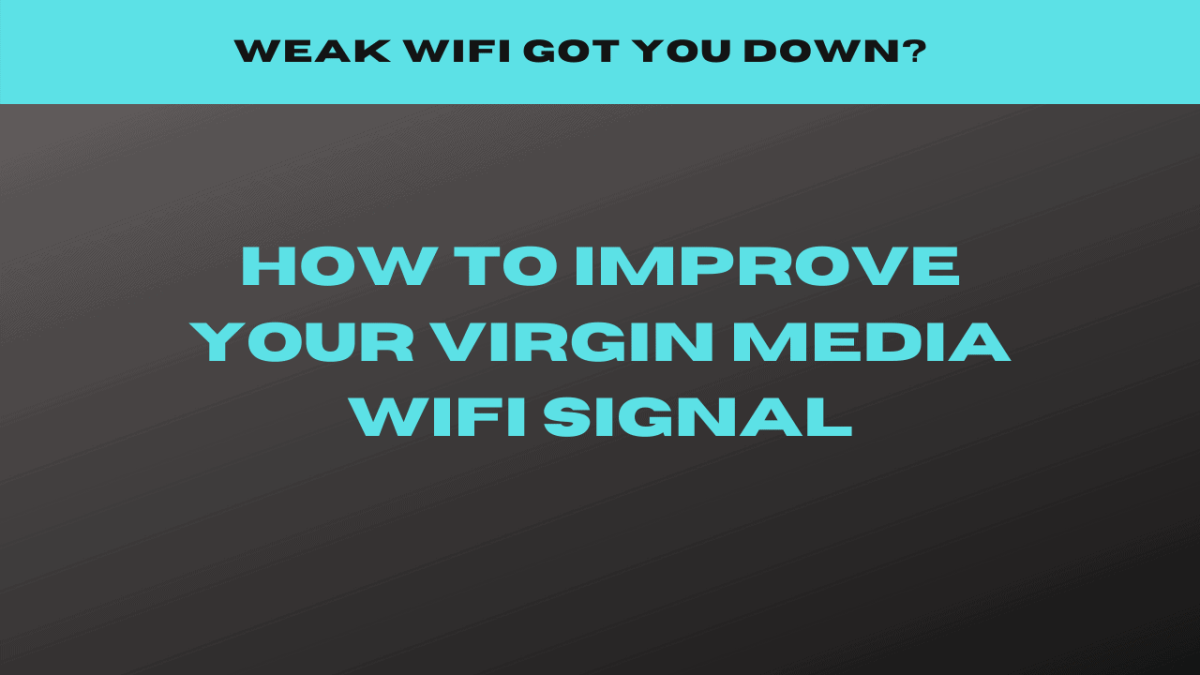Do you struggle with weak WiFi signal on your Virgin Media broadband connection? A slow, unstable wireless connection can be incredibly frustrating. This article will provide troubleshooting tips and hardware solutions to strengthen your Virgin Media WiFi network.
We’ll discuss how factors like router placement, device interference, and external signals can impact WiFi strength. You’ll learn how to optimize your router location, reduce signal conflicts, and choose a signal booster if needed. With simple tweaks and affordable tools, you can take control and improve the range and reliability of your Virgin Media WiFi.
Specific topics covered include:
- Factors affecting WiFi signal strength
- Troubleshooting tips for your router
- Hardware options like WiFi extenders such as Virgin WiFi boosters and mesh systems
- How to choose the right equipment to boost your signal
Follow our guide to get the broadband speed and wireless coverage you need throughout your home.
Table of Contents
- Factors Affecting WiFi Signal
- Device Interference
- Troubleshooting Tips
- Virgin Media Hub WiFi Setting Steps
- Need IT Support?
- FAQ
Factors Affecting WiFi Signal
Location and Range
The location of your router and distance between devices impacts signal strength. WiFi routers have limited wireless range. Walls, ceilings, large furniture, and other obstacles also weaken the signal by blocking the transmission between devices. Position your router in a central area facing your usage zones. Range extenders or mesh systems can boost coverage across larger spaces.

Device Interference
Home electronics that emit wireless signals can interfere with WiFi networks in the 2.4GHz and 5GHz frequency bands. Devices like baby monitors, security cameras, Bluetooth speakers, and microwaves cause signal interference when placed near the router. Keep a minimum distance of 1 meter between these electronics and your router.

Nearby WiFi Networks
Dense housing means lots of competing WiFi signals from your neighbors. These networks can congest WiFi channels and degrade performance. Use router settings to change broadcast channel to a less saturated band of the spectrum. This reduces competition for airtime with other networks.
Troubleshooting Tips
Router Placement
- Position your router centrally in your home, out in the open. Don’t hide it inside cabinets or behind furniture. Place it high up, away from other electronics. Face the front of the router towards your usage area.
- Keep a minimum distance of 1 meter away from other wireless devices like baby monitors that could interfere with the signal.
- Make sure the router is positioned vertically, not lying flat. The antenna needs to point up for best WiFi range.
Update Router Software
- Log into your router admin dashboard and check for any pending firmware updates. Keeping the router software up-to-date improves wireless connectivity and security.
Change WiFi Channel
- Use router settings to manually change the WiFi broadcast channel, especially if you have neighbors nearby. Optimal channels are 1, 6 or 11 as they don’t overlap.
Secure Router Login
- Make sure your router admin login and WiFi network password are strong and updated. This prevents others from connecting and dragging down your speed.
Hardware Solutions
If optimizing your router’s location and settings doesn’t sufficiently boost your WiFi signal, hardware accessories like wireless extenders and mesh systems can help. These devices work by receiving the existing WiFi signal and rebroadcasting it further into your home.
WiFi Extenders
- TP-Link RE220 AC750 WiFi Extender
- Pros: Affordable, easy to set up, dual band
- Cons: Can cut bandwidth in half for connected devices
- NETGEAR WiFi Extender EX2700
- Pros: Compact size, affordable
- Cons: Only dual band 2.4GHz, must be centrally located
Mesh WiFi Systems
- Google Nest Wifi Mesh System
- Pros: Easy setup, consistent fast speed, doubles as smart speaker
- Cons: Expensive upfront cost
- TP-Link Deco Mesh System
- Pros: Seamless coverage, built-in antivirus
- Cons: Requires more units for larger homes
Noteworthy Mentions
- TP-LINK RE220 AC750 Universal Dual Band Range Extender (Recommended)
- NETGEAR Wi-Fi Range Extender EX2700
- TP-LINK N300 Universal Wi-Fi Range Extender
Virgin Media Hub WiFi Setting Steps
Super Hub 1, 2 or 2ac
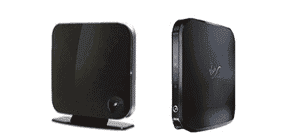
- Locate the IP Address of your WiFi router, usually found on the Hub sticker.
- Enter the IP address into a web browser an log into your Virgin Media router
- Click on the Wireless Network Settings option
- Find the Security Settings option, and location the Channel drop down menu. There are options specific to each WiFi frequency channel. This means that there is a different setting for the 2.4GHz segment and the 5GHz segment respectively.
- Select the channel that you would like to change to. It is generally advised that you select channel 1, 6 or 11 as these are the only channels that do not overlap one another.
- After you have made the changes click on Save.
- You may need to reboot your WiFi devices and the router in order to successfully complete the changes.
Below is the menu that you will find on the Super Hub 1:
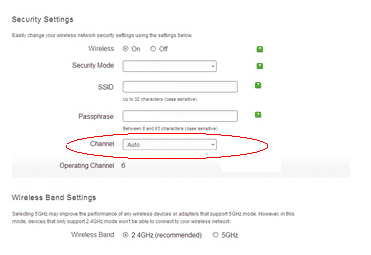
Below is the menu that you will find on the Super Hub 2 or 2ac:
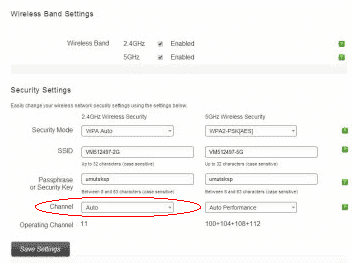
Super Hub 3 and 4
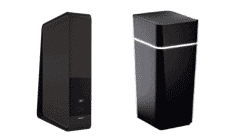
- Locate the IP Address of your WiFi router, usually found on the Hub sticker.
- Enter the IP address into a web browser an log into your Virgin Media router.
- Click on Advanced Settings
- Click on Wireless
- Click on Wireless Signal
- Tick the Manual box
- You will now be able to select the drop down menu for your WiFi channel selection.
- There are options specific to each WiFi frequency channel. This means that there is a different setting for the 2.4GHz segment and the 5GHz segment respectively.
- Once you have made the changes, select Apply Changes and then close your browser window.
- You may need to reboot your WiFi devices and the router in order to successfully complete the changes.
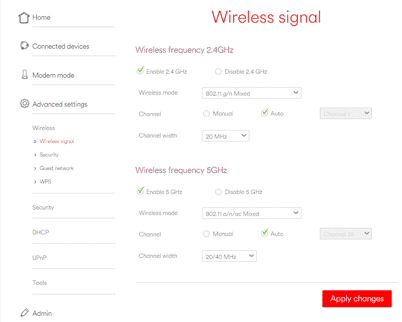
Conclusion
Boosting your Virgin Media WiFi signal doesn’t have to be difficult or expensive. With some simple adjustments to your router placement and settings, you can improve wireless performance in your home. Reduce interference by moving electronics away from your router and switching to a less congested channel.
If needed, affordable range extenders and mesh networks can expand your coverage without running new wires. With the right troubleshooting tips and hardware, you can take control of your Virgin Media wireless network.
We hope this guide gives you the tools to optimize your WiFi setup. Please reach out with any questions as you work to improve your broadband signal throughout your home. Our team is happy to help you achieve fast, reliable wireless to power your connected devices.
GET IN TOUCH
Need IT Support?
FAQ
How do I make my WiFi faster?
The best way to improve your WiFi speed is to upgrade your existing WiFi setup, especially if it is quite old. We recommend that you look at a Virgin WiFi booster, or a Virgin Access Point upgrade as the quickest and easiest way to upgrade your WiFi speeds without upgrading your Virgin Media package.
How can I boost my WiFi signal at home?
Yes, you can. The easiest way to do this is by repositioning your WiFi router so that it is not obstructed by anything like thick walls and flooring. A Virgin WiFi Booster will help to increase your overall WiFi footprint in your home if repositioning doesn’t work.
Do WiFi boosters work?
Yes they certainly do. You will notice an immediate reduction in WiFi black spots and dead zones after installing one.

